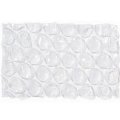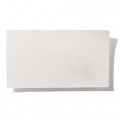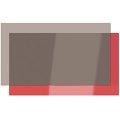Adhesive Films
Information about adhesive films
Are you looking for functional films? Would you like to upgrade furniture, design information signs or shop window inscriptions or work with self-adhesive foil in the DIY sector?
Then get an overview of our range of single-sided adhesive films. Double-sided adhesive films can be found here. Functional films, both self-adhesive and self-adhesive, are incredibly versatile. We offer you a selection in top quality.
Adhesion films are usually soft plastic films made of PVC (polyvinyl chloride) or PE (polyethylene) with a very smooth underside, which adhere to smooth, pore-free surfaces such as glass without adhesive. An illustrative example of the principle of self-adhesive films is the transparent film over the potato salad that you bring with you to grill with your neighbours.
Our aluminium adhesive tape, which is used both as a vapour barrier in building insulation and for decorative purposes, is one of our aluminium adhesive foils. The decorative, beautifying aspect is also in the foreground with the decorative adhesive films. Regardless of whether you use glittering holographic adhesive film or material adhesive film made of leather, wood or velour for your projects: There are no limits to your imagination. Self-adhesive polystyrene mirrors are also particularly popular in this area. Those who prefer metallic, in this case gold and silver, will find what they are looking for in metallic adhesive films.
Coloured self-adhesive films are the material from which advertising lettering is cut, especially for outdoor advertising. Areas of application include buses, trams and taxis. Another important field of application is the production of signs or light boxes for indoor and outdoor use. For the different applications there are transparent, translucent and opaque films with different lifetimes. For finer motifs or lettering, the use of transfer foil is recommended, which supports the mounting of the cut-out elements onto the desired surface.
As the name suggests, stencil films are suitable for the production of stencils. Table films also carry their function in the name. They function as table substitutes and can be described with chalk and the like. Anyone who attaches great importance to the mirror effect is best equipped with mirror foils or flexible mirror plates to create the mirror of their choice on the surface of their imagination.
The use of reflective adhesive film, which is actually used for the production of warning notices and traffic signs, achieves special effects not only in the decorative area. It is one of our light-technical foils and is therefore, for example, in the company of lampshade foil.
We carry many types of transparent protective films, e.g. for book covers and photo albums. In order to protect the products in your window displays from fading by sunlight, the use of UV protection films or sun protection films is recommended. Our sun protection film can also be used as a spy film.









